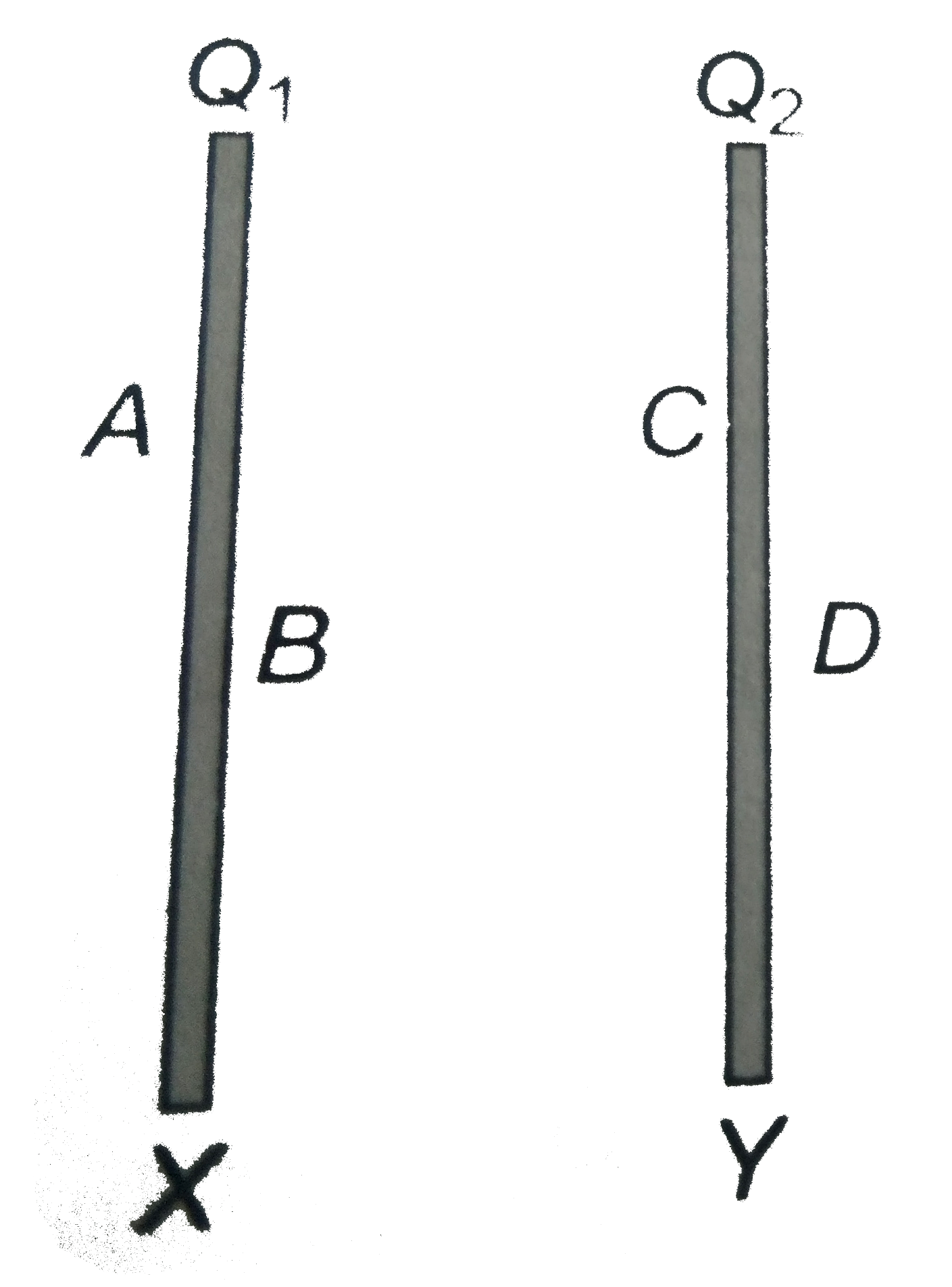Charge q1 is fixed and another point charge q2 is placed at a distance r0 from q1 on a frictionless horizontal surface. Find the velocity of q2 as a function of seperation r between them (treat as point charges and mass of q2 is m) Solution in Telugu

When the seperation between the charges is r, the force between them is F=14π∈0q1q2r2
Acceleration of q2=Fm=q1q24π∈0mr2
dvdt=dvdt(drdt)=vdvdr
⇒vdvdr=q1q24π∈0mr2
∫v0vdv=q1q24π∈0m∫rr0r−2dr
or v22=q1q24π∈0m∣∣∣−1r∣∣∣rr0
⇒v=√q1q22π∈0m{1r0−1r}
Topper's Solved these Questions
- BOOK - AAKASH SERIESCHAPTER - ELECTRIC FIELD AND POTENTIALEXERCISE - EXERCISE (VERY SHORT ANSWER QUESTIONS)23videos
ELECTRIC FIELD AND POTENTIAL
- BOOK - AAKASH SERIESCHAPTER - ELECTRIC FIELD AND POTENTIALEXERCISE - PROBLEMS (LEVEL-I)18videos
ELECTRIC FIELD AND POTENTIAL
- BOOK - AAKASH SERIESCHAPTER - ELECTRIC CHARGES AND FIELDSEXERCISE - Practice Exercise57videos
ELECTRIC CHARGES AND FIELDS
- BOOK - AAKASH SERIESCHAPTER - ELECTROMAGNETIC INDUCTIONEXERCISE - Additional Exercise10videos
ELECTROMAGNETIC INDUCTION
Similar Questions
Usually it is the negative charge that is transferred when two bodies are rubbed together. Can you explain. Why?
05:26View SolutionCalculate the magnitude of force between two like charges each of magnitude 4C seperated by distance 3 m.
02:31View SolutionWat is the charge acquired by a body when one million electrons are transferred to it.
02:03View SolutionConsider Experiment II in Section 6.2.
a. What would you do to obtain a large deflection of the galvanometer?
b. How would you demonstrate the presence of an induced current in the absence of a galvanometer?03:03View SolutionA charge Q located at a point →r is in equilibrium under the combined field of three charges q1,q2 and q3. If the charges q1 and q2 are located at point →r1 and →r2 respectively, find the direction of the force on Q due to q3 in terms of q1,(q2),→r1→r2, and →r.
03:14View SolutionAssertion: Two charges q_(1) and q_(2) are placed at separation r . Then magnitude of the force on each charge is F . Reason: Now a third charge q_(3) is placed near q_(1) and q_(2) . Then force on q_(1) and q_(2) remains F .
01:29View SolutionTwo large , parallel conducting plates X and Y , kept close to each other , are given Q1 and Q2(Q1>Q2). The four surfaces of the plates are A,B,C and D , as shown

(i) The charge on A is 12(Q1+Q2)
(ii) The charge on B is 12(Q1−Q2)
(iii) The charge on C is 12(Q2−Q1)
(iv) The charge on D is 12(Q1+Q2)03:41View SolutionCharge q1 is fixed and another point charge q2 is placed at a distance r0 form q1 on a frictionless horizontal surface.Find the velocity of q2 as a function of seperation r between them (treat the changes as point charges and mass of q2 is m)
02:59View SolutionAssertion: Four point charges q1,q2,q3 and q4 are as shown in Fig,The flux over the shown Gaussians surface depends only on charges q1 and q2
Reason:Electric field at all points on Gaussians surface depends on any charges q1 and q2
 03:07View Solution
03:07View Solutionq1 और q2 इस प्रकार के बिंदु आवेश है कि q1×q2>0 दोनों आवेशों के बीच बल की क्या प्रकृति है?
04:13View SolutionA positive point charge q_(1) is placed at (a,0) and another positive point charge q_(2) is placed at (0,a) . Find the force acting on q_(1) .
10:12View Solutionचित्र 2.58 में बिन्दु आवेश q1 और q2 की वैद्युत क्षेत्र रेखाएँ दिखाई गई है। q1 और q2 के क्या-क्या चिह्न हैं? यदि रेखाएँ आवेश के अनुपात में खींची गईं हों, तो अनुपात q1/q2 क्या है?
 03:25View Solution
03:25View SolutionElectric force between two point charges q_(1) and q_(2) at rest is F. Now is a charge -q_(1) is placed next to q_(1) . What will be the (a) force on q_(2) due to q_(1) (b) total force on q_(2) ?
01:52View Solutionएक बिन्दु आवेश q1, एक अन्य बिन्दु आवेश q2 पर F बल आरोपित करता है q3 को q2 के समीप में रख दिया जाये तो q1 के कारण q2 पर बल का मान होगा -
View SolutionA charge Q located at a point vec r is in equilibrium under the combined field of three charges q_(1), q_(2) and q_(3) . If the charges q_(1) and q_(2) are located at point vec r_(1) and vec r_(2) respectively, find the direction of the force on Q due to q_(3) in terms of q_(1),(q_2), vec r_(1) vec r_(2) , and vec(r) .
View Solution

